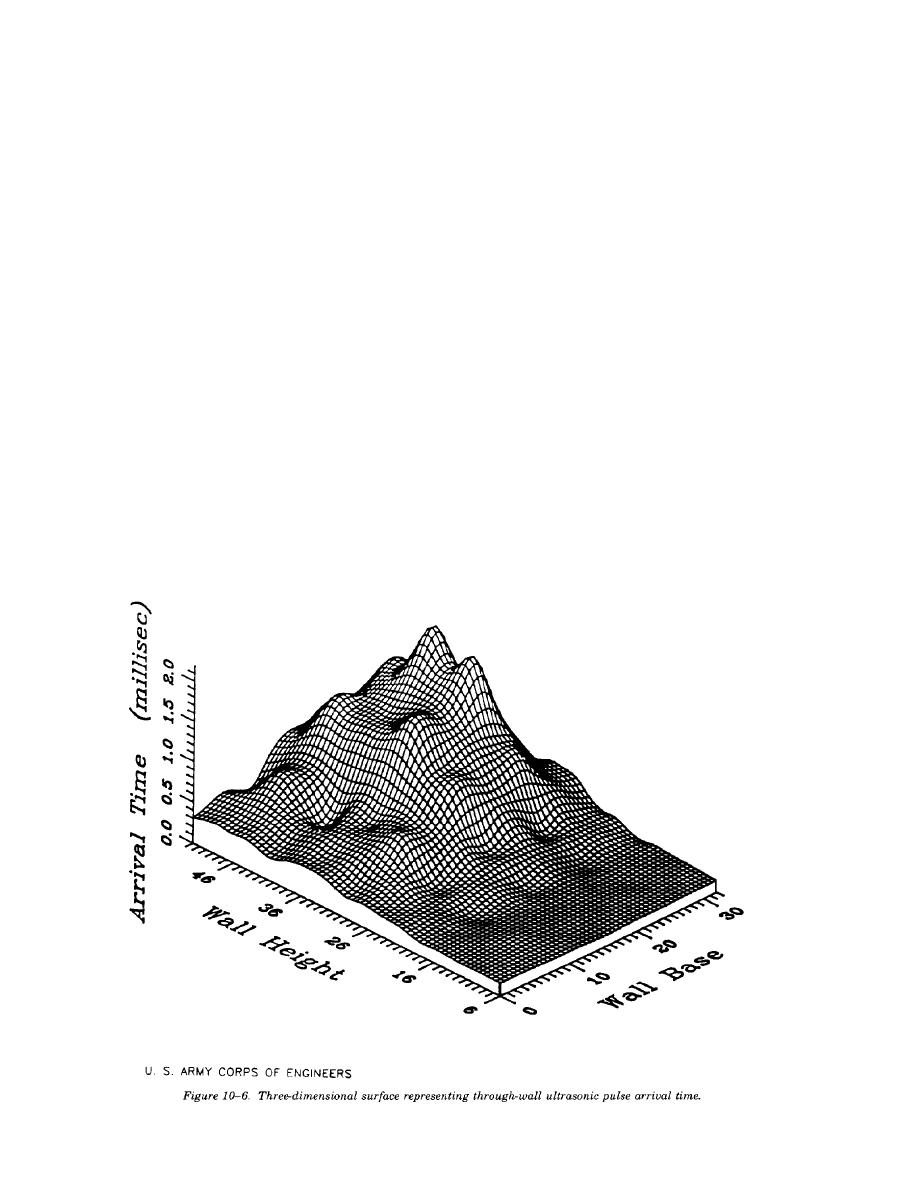
TM 5-809-3/NAVFAC DM-2.9/AFM 88-3, Chap. 3
(6) Application. While the use of ultrasonic
point where the distance between transducers is
very small, such as one foot, and reduce the
techniques has been successful for the evaluation of
usefulness of the method.
concrete, the method is less well suited to
(5) Direct (through-wall) tests. Figure 10-6
heterogeneous materials such as masonry. The
shows a three dimensional surface representing the
attenuation of a stress wave is related to its
variation in ultrasonic pulse arrival time over the
wavelength and the size of the largest flaws in its
area of a masonry wall. The vertical dimension is
path. As the relatively short wavelength of the
the arrival time, so humps on the plot indicate areas
ultrasonic pulse passes through each mortar joint,
of relatively long arrival time and thus areas of
the pulse suffers considerable energy loss, resulting
potential voids. The test wall in figure 10-6 was
in extremely rapid signal attenuation. This
constructed with known flaws in the masonry.
attenuation inhibits the use of ultrasonics over all
While the exterior wythes of this wall were
but the shortest pathlengths. Because of the limi-
constructed of uniform quality, the interior wythe
tations of the ultrasonic method applied to ma-
had varying materials and workmanship. In general,
sonry, lower frequency sonic testing (1 to 5 kHz)
the highest quality materials were located in the
(a.k.a. "mechanical pulse testing") should be used
lower courses of the interior wythe, and the quality
in NDE techniques for masonry structures.
e. Mechanical pulse. This method, called "Me-
deteriorated with increasing height in the wall. The
most significant flaw was an air space in the upper
chanical Pulse Velocity" testing, involves input of
right portion of the wall. The location of the air
a stress wave into a masonry wall by means of a
space in the interior wythe is clearly outlined in
hammer blow, and recording of the subsequent
both the contour and surface plots. The less
vibrations with an accelerometer. This technique,
dramatic changes in material quality over the height
due to its low frequency, high-amplitude, long-
of the wall are apparent as small changes in arrival
wavelength signal, is better suited to the evaluation
time between the top and bottom halves of the
of masonry than the ultrasonic technique. As with
wall.
ultrasonic testing, the quantity of interest has
traditionally been the arrival time of the pulse,
10-8


 Previous Page
Previous Page
